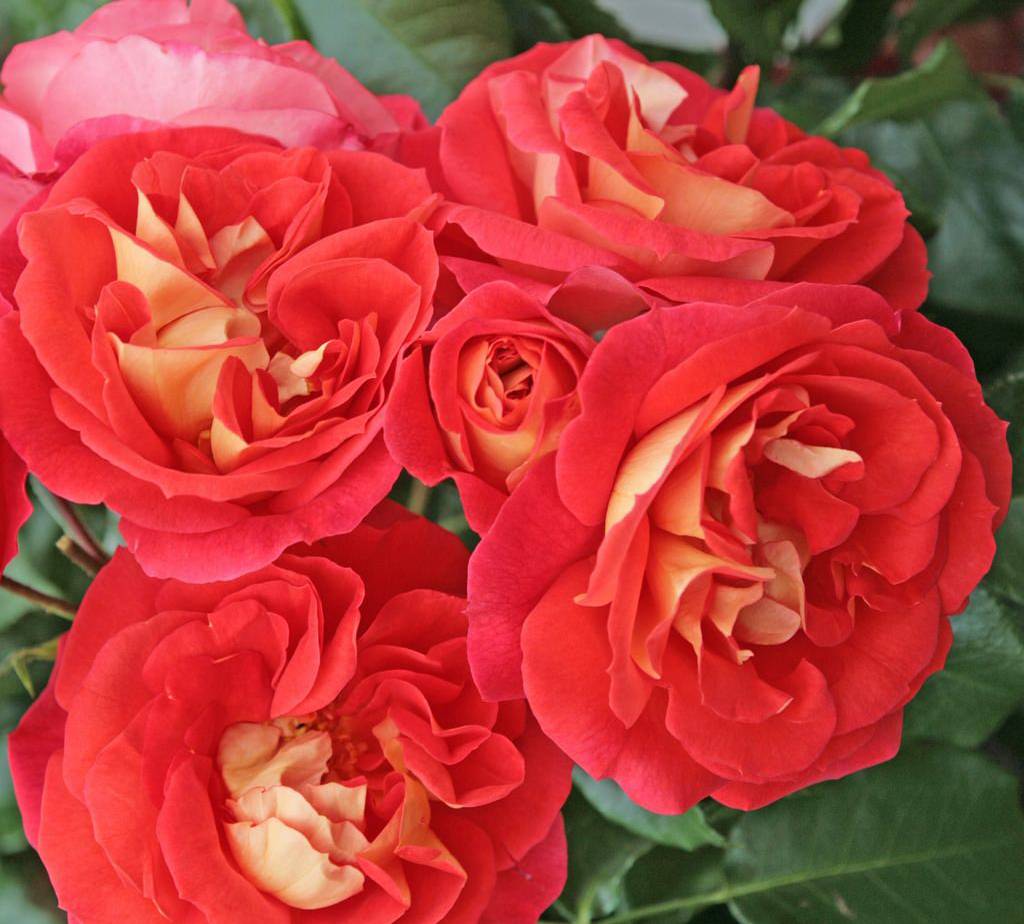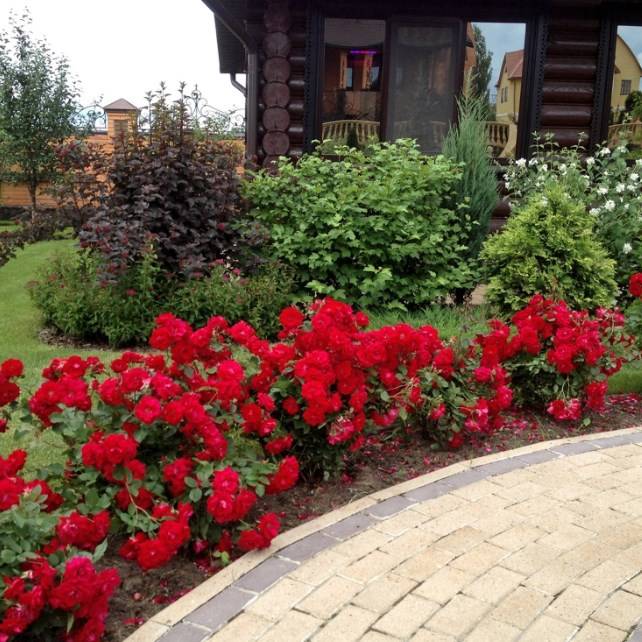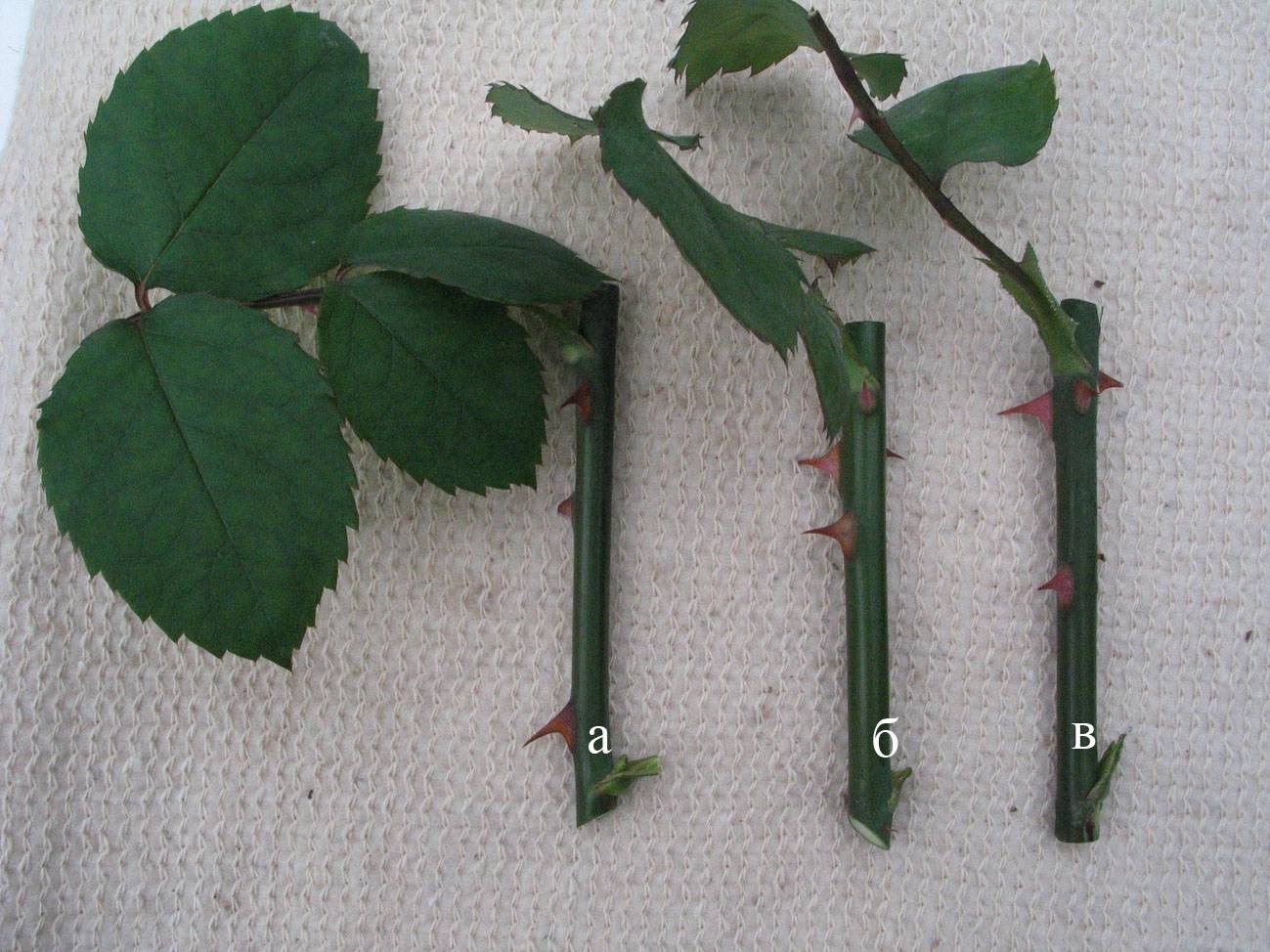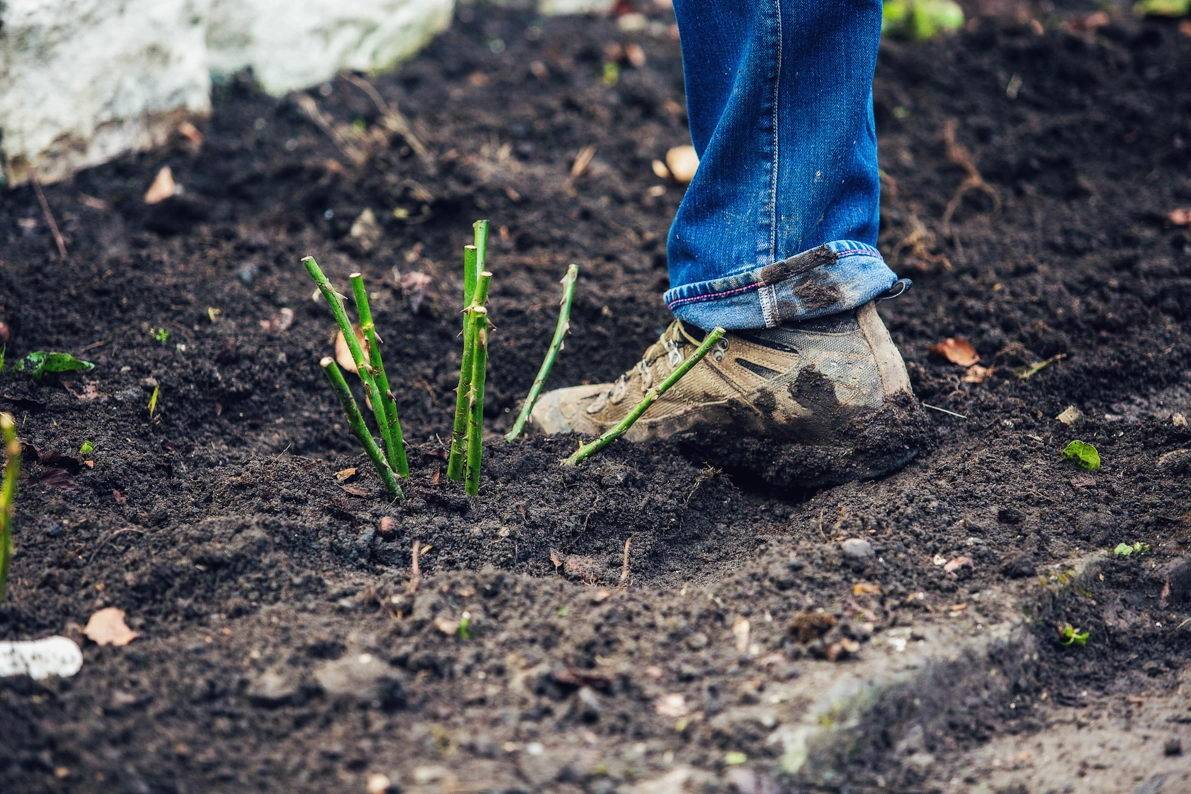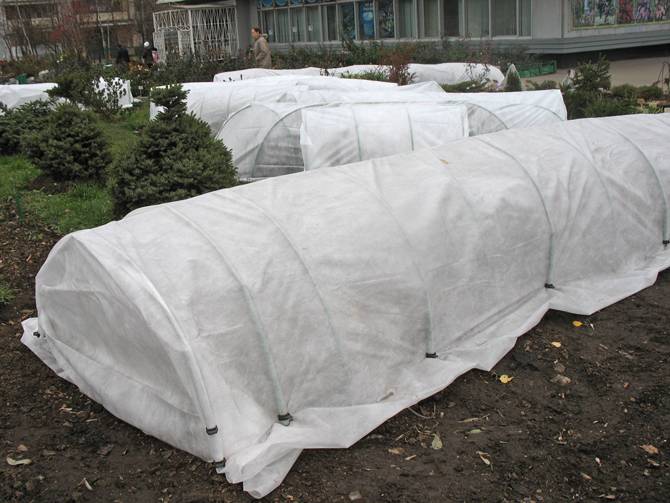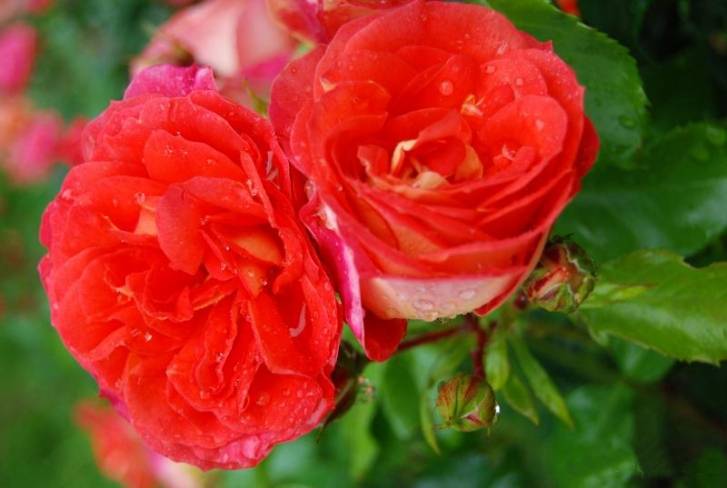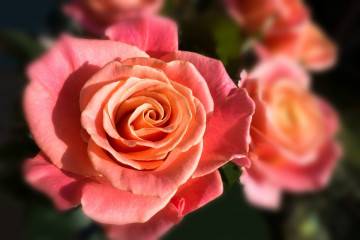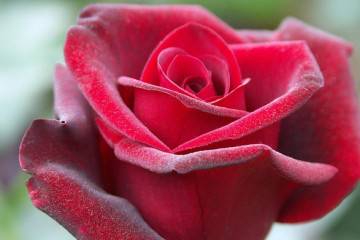Rose Brothers Grimm (Gebruder Grimm) - what is this variety, description
Content:
Floribunda rose Brothers Grimm was bred in 2002 by a German breeder in the Cordes nursery, which is known throughout the world. This plant has won many awards in various international competitions. This is due to a large number of advantageous features, including unpretentious cultivation.
Brief description of the rose Brothers Grimm (Gebruder Grimm)
Rose Gebrüder Grimm blooms twice during one growing season. It should be noted that the first flowering is always more lush and spectacular. The buds are formed with a rich pink-orange color, the structure of the petals is densely double. If you look at the flowers some time after their opening, then the petals will already have a raspberry-pink hue. The leaves are medium in size, have a rich green color, the surface is glossy. On each shoot, an average of 3 to 7 buds are formed. During flowering, they give off a pleasant mild aroma.
Advantages and disadvantages of the variety
The main advantages of the variety include:
- Excellent indicators of resistance to diseases and pest attacks.
- Moderately rich pleasant aroma that the bush exudes during flowering.
- Subject to the rules of agricultural technology, lush and long flowering.
As for the shortcomings, growers note the rapid fall of the petals.
Use in landscape design
The Brothers Grimm rose has excellent decorative properties, making it look spectacular both for group and single plantings. This variety is often paired with other types of roses that bloom in white, yellow and creamy colors. Most often they are used to decorate curbs and garden hedges.
Features of growing roses in the open field
In order for the plant to develop well and bloom, it is necessary to plant it correctly. In the specific case, planting is mainly carried out by seedlings.
The right time for planting planting material is April 20-May 30. In autumn, this period fluctuates between September 10 and October 20. It is recommended to plant the plant in a sunny place. The culture is not placed in the lowland, because it loves light and warmth. The site must be protected from drafts.
The soil should be fertile, loose and slightly acidic. Shortly before planting, the site should be dug up and weeds should be removed.
Algorithm for planting a seedling:
- In the selected area, holes are dug with dimensions of 60x45 cm.
- At the bottom, with the help of expanded clay or broken brick, a drainage layer is laid out, then organic fertilizers.
- A nutritious soil mixture is poured over the drainage and fertilizer layer.
- The seedling is lowered into the hole and covered with soil, which is compacted a little at the end.
The plant must be watered, after which the near-stem circle is mulched with sawdust or rotted humus.
Plant care
The plant is unpretentious, but it needs to follow the basic rules of cultivation, which boil down to regular watering, fertilization, mulching, pruning and disease prevention.
In the spring, soon after awakening, sanitary pruning is carried out, during which damaged shoots are removed. Further, nitrogen-containing fertilizers are applied for active growth of green mass. Closer to autumn, it is more expedient to use combined mineral compositions.
Despite the good indicators of resistance to diseases, it is imperative to spray the bushes with insecticides for prevention purposes.
Blooming rose
The bushes bloom for a long time and, subject to the rules of agricultural technology, they are quite luxuriant. You can admire the flowering of a rose from the beginning of July until the first frost. The buds form lush, exude a pleasant unsaturated aroma.
After flowering, the bushes must be prepared for the upcoming cold weather. For this, watering is reduced and potash-phosphorus fertilizers are applied. Dry leaves and buds are removed.
The plant may not bloom due to insect damage to the bush, poorly selected area, improper care (fertilization, watering). It is possible that a weak or diseased stalk was originally planted.
Flower propagation
This variety is propagated in two ways: by cuttings and grafting. The first method is mainly used.
Cuttings are prepared as follows. The tops of lignified shoots are cut off with a length of about 8 cm. The lower cut should have an angle of 45 degrees. For 1-2 days, the planting material is placed in a growth stimulator. Rooting is carried out in the open field.
Diseases, pests and ways to control them
Rose Gebruder Grimm is susceptible to the attacks of aphids, which not only literally drinks all the juices from the plant, but is also a carrier of diseases that are dangerous to the plant. It is a powdery mildew that multiplies rapidly in confined spaces.
To reduce the likelihood of developing fungal diseases, you need to water strictly under the bush, avoiding drops on the leaves and buds. The bushes are also irrigated with copper sulfate.
The Brothers Grimm rose variety is a worthy plant that deserves the attention of novice and experienced florists. Thanks to good decorative qualities and unpretentious care, bushes with lush flowering will delight the eyes of all households.
